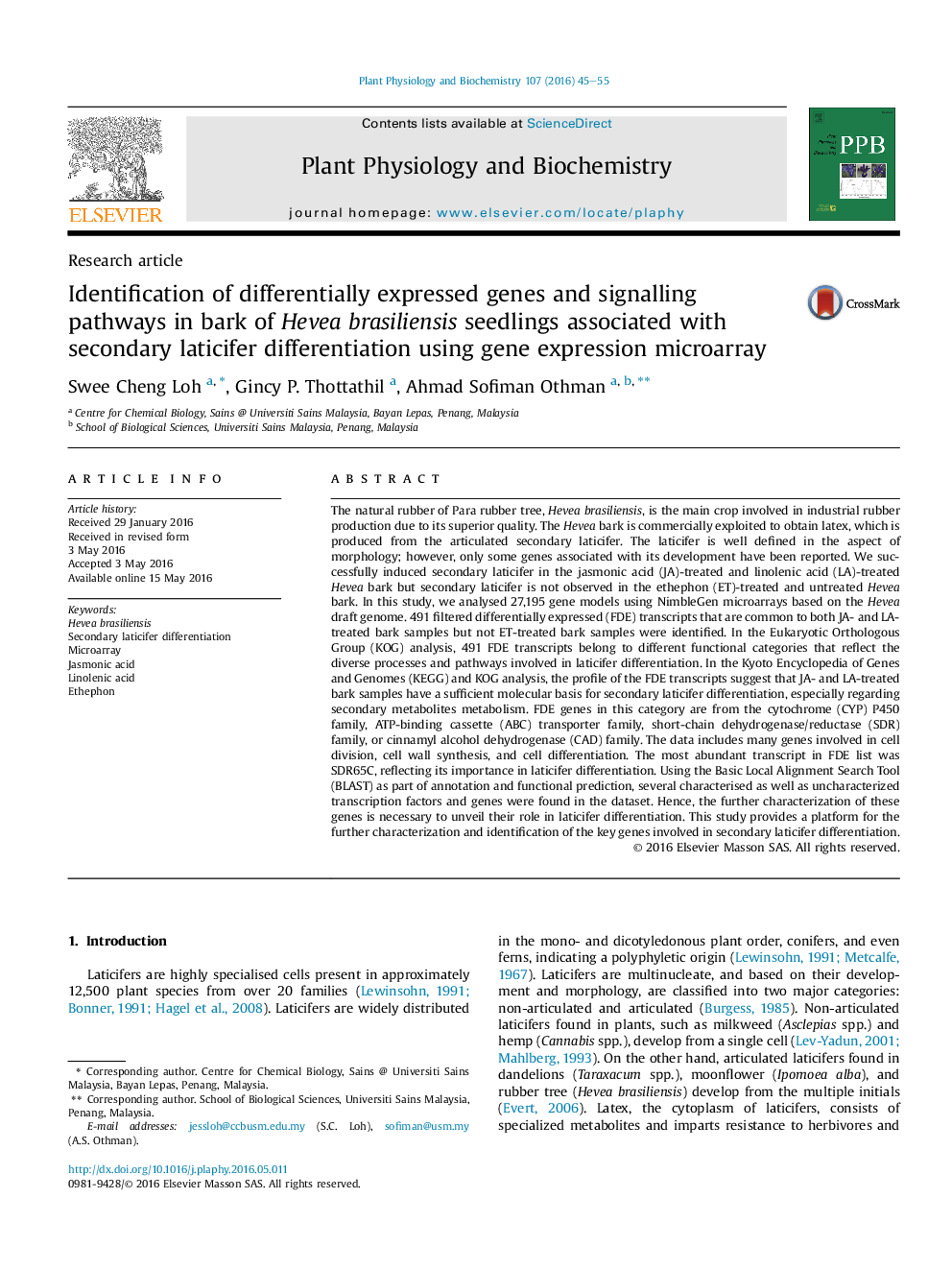| Article ID | Journal | Published Year | Pages | File Type |
|---|---|---|---|---|
| 2014650 | Plant Physiology and Biochemistry | 2016 | 11 Pages |
•The rubber draft genome (2013) acts as platform for the microarray design (27,195 gene models).•Secondary laticifers are successfully induced in both jasmonic acid- and linolenic acid-treated young Hevea bark samples.•Differentially expressed genes (DEG) involved in secondary laticifer differentiation was identified and classified.•Most rubber biosynthetic genes are not present in this study.•DEG are mainly categorised in the secondary metabolites metabolism (CYP P450, ABC transporter, SDR, or CAD family).
The natural rubber of Para rubber tree, Hevea brasiliensis, is the main crop involved in industrial rubber production due to its superior quality. The Hevea bark is commercially exploited to obtain latex, which is produced from the articulated secondary laticifer. The laticifer is well defined in the aspect of morphology; however, only some genes associated with its development have been reported. We successfully induced secondary laticifer in the jasmonic acid (JA)-treated and linolenic acid (LA)-treated Hevea bark but secondary laticifer is not observed in the ethephon (ET)-treated and untreated Hevea bark. In this study, we analysed 27,195 gene models using NimbleGen microarrays based on the Hevea draft genome. 491 filtered differentially expressed (FDE) transcripts that are common to both JA- and LA-treated bark samples but not ET-treated bark samples were identified. In the Eukaryotic Orthologous Group (KOG) analysis, 491 FDE transcripts belong to different functional categories that reflect the diverse processes and pathways involved in laticifer differentiation. In the Kyoto Encyclopedia of Genes and Genomes (KEGG) and KOG analysis, the profile of the FDE transcripts suggest that JA- and LA-treated bark samples have a sufficient molecular basis for secondary laticifer differentiation, especially regarding secondary metabolites metabolism. FDE genes in this category are from the cytochrome (CYP) P450 family, ATP-binding cassette (ABC) transporter family, short-chain dehydrogenase/reductase (SDR) family, or cinnamyl alcohol dehydrogenase (CAD) family. The data includes many genes involved in cell division, cell wall synthesis, and cell differentiation. The most abundant transcript in FDE list was SDR65C, reflecting its importance in laticifer differentiation. Using the Basic Local Alignment Search Tool (BLAST) as part of annotation and functional prediction, several characterised as well as uncharacterized transcription factors and genes were found in the dataset. Hence, the further characterization of these genes is necessary to unveil their role in laticifer differentiation. This study provides a platform for the further characterization and identification of the key genes involved in secondary laticifer differentiation.
